Do you know how magnesium affects your daily life? This important mineral helps with muscle and nerve function, heart rhythm, and bone health. Eating foods rich in magnesium can boost your sleep and energy. There are many foods packed with magnesium, making it easy to choose the right ones.
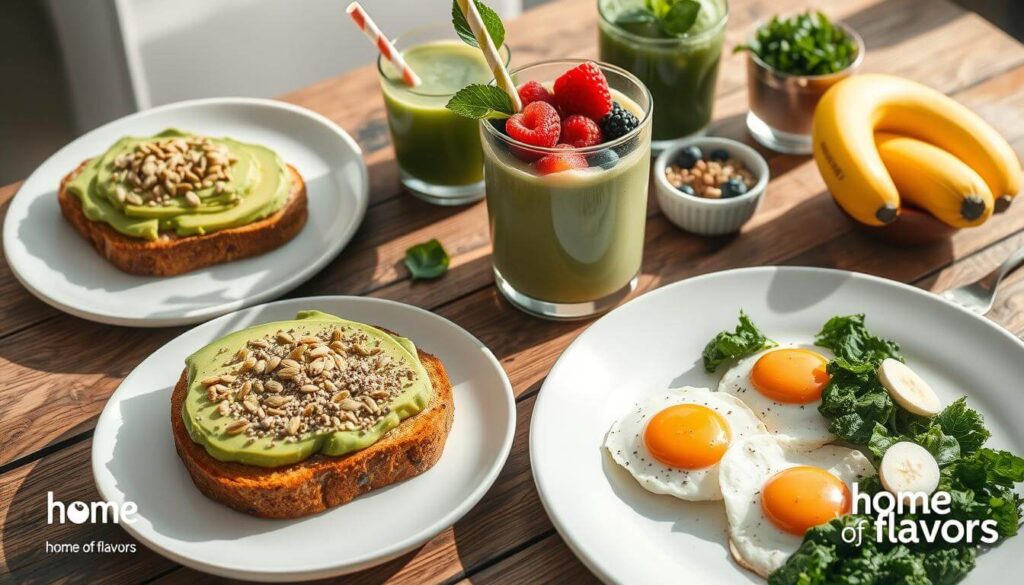
Table of Contents
Knowing how magnesium is key to better health is a great first step. By eating foods high in magnesium, you can improve your sleep and energy. Whether you’re trying to fix a health issue or just want a balanced diet, learning about magnesium is a smart move.
Key Takeaways
- Incorporating food with magnesium into your diet can improve sleep and energy levels
- Magnesium-rich foods are essential for various bodily functions, including muscle and nerve function
- Best sources of magnesium include a variety of whole foods, such as leafy greens and nuts
- A balanced diet that includes magnesium-rich foods can have a significant impact on overall health
- Understanding the importance of magnesium in your diet is critical for making good food choices
Understanding the Importance of Magnesium in Your Diet
Magnesium is key for our health. It’s important to eat foods rich in magnesium. You can find it in leafy greens, nuts, and whole grains. A good magnesium food list helps you get enough of this nutrient.
When planning your diet, know the daily magnesium needs. These needs change with age, sex, and more. Look out for signs of magnesium deficiency like fatigue and muscle cramps. These signs mean you might need more magnesium.
Daily Recommended Magnesium Intake
Most adults need 400-420 milligrams of magnesium daily. You can meet this need with foods like dark leafy greens, nuts, and seeds.
Signs of Magnesium Deficiency
Feeling tired, weak, or getting muscle cramps? These could be signs of magnesium deficiency. Eating more magnesium-rich foods might help.
Health Benefits of Adequate Magnesium Levels
Enough magnesium is good for sleep, energy, and bone health. Eating a balanced diet with magnesium-rich foods supports your health.
Eating foods high in magnesium is vital for health. Make sure your diet includes a variety of magnesium-rich foods. This way, you can stay healthy and feel your best.
How Magnesium Affects Sleep and Energy Levels
Adding a magnesium-rich diet to your daily life can greatly improve your sleep and energy. Magnesium helps your body’s internal clock work better. This makes it easier to fall asleep and sleep well.
Magnesium also boosts energy production. It’s key in making ATP, a compound that gives you energy. Eating foods high in magnesium, like dark greens and nuts, helps your body make energy efficiently.
Here are some ways to add magnesium to your diet:
- Eat magnesium-rich foods such as spinach, almonds, and brown rice
- Take a magnesium supplement after consulting with a healthcare professional
- Drink magnesium-rich beverages such as mineral water
By making these simple changes, you can see the benefits of a magnesium-rich diet.
| Food | Magnesium Content (mg) |
|---|---|
| Spinach (1 cup cooked) | 157 |
| Almonds (1 ounce) | 80 |
| Brown rice (1 cup cooked) | 44 |
Top Food with Magnesium for Daily Consumption
There are many foods rich in magnesium to add to your diet. These foods are key for staying healthy. They can be easily included in your daily meals.
Leafy Green Vegetables
Spinach and kale are great for magnesium. They also have iron and calcium, making them very nutritious.
Nuts and Seeds
Almonds and pumpkin seeds are full of magnesium. You can mix them into oatmeal, yogurt, or salads for a healthy snack.
Whole Grains
Brown rice and quinoa are good for magnesium. They also have lots of fiber, which aids digestion and keeps you full.
Legumes
Black beans and chickpeas are rich in magnesium. They’re also high in protein and fiber, making them a nutritious choice for meals.
Some examples of magnesium-rich foods include:
- Dark leafy greens like spinach and kale
- Nuts and seeds like almonds and pumpkin seeds
- Whole grains like brown rice and quinoa
- Legumes like black beans and chickpeas
Eating these foods daily can help you get enough magnesium. It’s important to eat a variety to meet your magnesium needs.
Best Fish and Seafood Sources of Magnesium
Fish and seafood are top picks for top magnesium foods. Fatty fish like salmon and mackerel are packed with magnesium. They’re a fantastic choice for your meals. Shrimp and scallops also offer a good amount of magnesium.
To boost your magnesium, add these foods to your diet. Try grilling or baking salmon and mackerel. Or, add shrimp and scallops to your favorite dishes. Here are some magnesium-rich fish and seafood:
- Salmon: 59 mg of magnesium per 3 oz serving
- Mackerel: 59 mg of magnesium per 3 oz serving
- Shrimp: 36 mg of magnesium per 3 oz serving
- Scallops: 32 mg of magnesium per 3 oz serving
Adding these magnesium food list items to your meals can improve your health. It also boosts your magnesium levels. Always pick fresh and sustainable options for the best nutritional benefits.
Dairy Products Rich in Magnesium
Dairy products are great for a magnesium-rich diet. They offer a lot of magnesium, which is good for your health. Adding dairy to your meals can boost your magnesium levels.
There are many dairy items that are high in magnesium. Yogurt and kefir are top choices. They help with bone health and digestion.
Yogurt and Kefir Options
Some yogurts and kefirs have more magnesium than others. Choose products from grass-fed cows or those with added magnesium. Making your own yogurt or kefir with magnesium-rich milk is also a good idea.
Cheese Varieties with High Magnesium
Cheese is also good for a magnesium-rich diet. Ricotta and mozzarella are high in magnesium. You can use them in many dishes, like pasta and pizza.
Here are some examples of dairy products rich in magnesium:
- Ricotta cheese: 1 cup = 40 mg of magnesium
- Mozzarella cheese: 1 cup = 35 mg of magnesium
- Yogurt: 1 cup = 30 mg of magnesium
- Kefir: 1 cup = 25 mg of magnesium
Adding these dairy products to your diet can improve your health. Just remember to pick low-sugar and low-fat options for the best benefits.
Plant-Based Magnesium Powerhouses
Plant-based foods are some of the best sources of food with magnesium. Dark leafy greens like spinach and kale are packed with magnesium. They’re great for your diet. Legumes, such as black beans and chickpeas, also have a lot of magnesium.
Nuts and seeds are other plant-based sources of magnesium. Almonds, cashews, and pumpkin seeds are all high in magnesium. They make for excellent snacks to add to your daily routine. Including these best sources of magnesium in your diet supports your overall health and well-being.
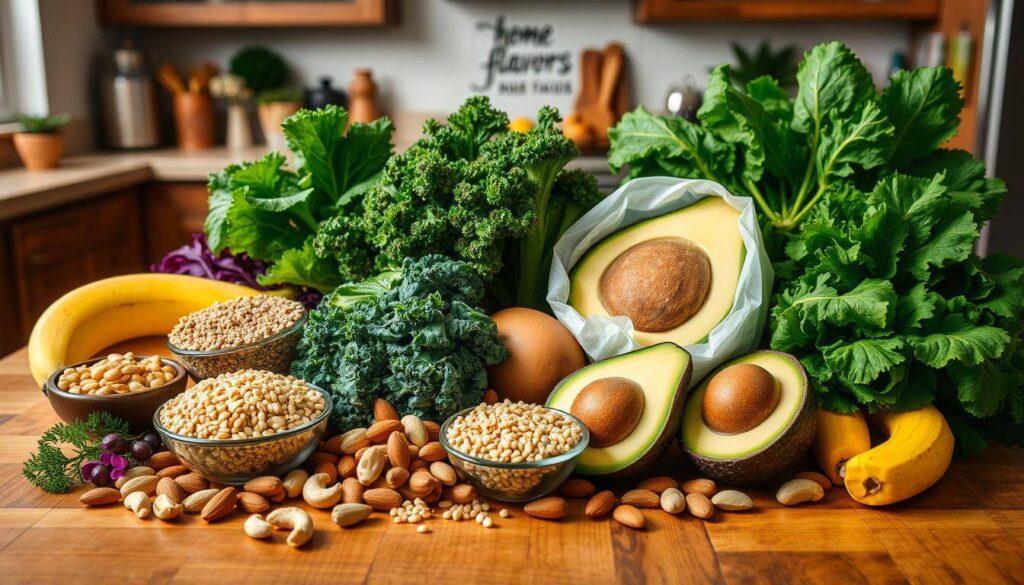
Some examples of plant-based magnesium powerhouses include:
- Dark leafy greens: spinach, kale, collard greens
- Legumes: black beans, chickpeas, lentils
- Nuts and seeds: almonds, cashews, pumpkin seeds
Adding these plant-based foods to your diet can help you meet your magnesium needs. With a bit of creativity, you can make magnesium-rich foods a regular part of your meals and snacks.
Dark Chocolate and Cacao: Sweet Sources of Magnesium
Dark chocolate and cacao might not seem like a magnesium-rich food at first. But, they are actually packed with magnesium. A single ounce of dark chocolate has about 64 milligrams of magnesium.
To get the most magnesium from these treats, choose wisely. Opt for dark chocolate with at least 70% cocoa solids. Cacao nibs or powder are also good for adding to smoothies or oatmeal.
Choosing the Right Chocolate Percentage
The cocoa solid percentage in dark chocolate matters a lot. Higher percentages mean more magnesium and less sugar. Here are some good options:
- 70% cocoa solids: A good starting point, with a balance of flavor and magnesium content.
- 85% cocoa solids: A higher percentage of cocoa solids, with more magnesium and less sugar.
- 90% cocoa solids: For those who prefer a stronger flavor, with the most magnesium and least sugar.
Daily Recommended Portions
It’s important to eat dark chocolate and cacao in moderation. Aim for 1-2 ounces of dark chocolate or 1-2 tablespoons of cacao nibs a day. This way, you can enjoy magnesium benefits while treating yourself.
Always check the ingredient label. Choose products with minimal added sugar and no artificial ingredients. With careful selection, dark chocolate and cacao can be a tasty and healthy part of your diet.
Fruits That Contain Significant Magnesium
Fruits are often not thought of as a source of magnesium. But, some fruits are packed with this important mineral. Bananas and avocados are two fruits that stand out. Adding them to your meals can boost your magnesium levels and improve your health.
Knowing which fruits are magnesium-rich is key. Here are some fruits that are high in magnesium:
- Bananas: 1 medium banana contains about 32 milligrams of magnesium
- Avocados: 1 medium avocado contains about 59 milligrams of magnesium
- Dates: 1 cup of dates contains about 63 milligrams of magnesium
By adding these fruits to your diet, you can meet your magnesium needs. Don’t forget to include other magnesium-rich foods like leafy greens, nuts, and seeds. They all play a role in keeping you healthy and feeling good.
Incorporating Magnesium-Rich Foods into Your Breakfast
Starting your day with foods high in magnesium can boost your energy and health. Magnesium is key for muscle and nerve function, controlling blood sugar, and blood pressure.
Adding magnesium-rich foods to your breakfast is easy. Try nuts, seeds, and whole grains in your morning meals. For instance, make overnight oats with almonds and chia seeds, or whole-grain toast with avocado and eggs.
Quick Breakfast Recipes
- Overnight oats with nuts and seeds: 1/2 cup rolled oats, 1/2 cup unsweetened almond milk, 1 tablespoon chia seeds, 1 tablespoon sliced almonds, 1/2 teaspoon vanilla extract
- Whole-grain toast with avocado and eggs: 1 slice whole-grain bread, 1/2 avocado, 2 eggs, salt and pepper to taste
Meal Prep Ideas
Meal prep is a smart way to ensure a magnesium-rich breakfast every day. Make a batch of magnesium-rich granola on the weekend. Mix rolled oats, nuts, seeds, and honey, then bake until toasted.
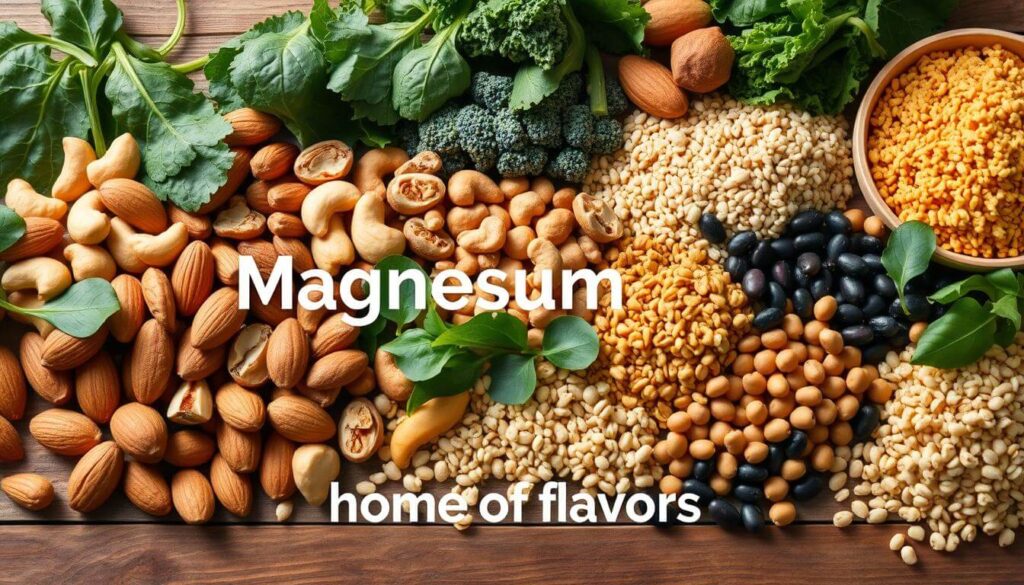
| Food | Magnesium Content (mg) |
|---|---|
| 1 cup cooked oatmeal | 61 |
| 1 cup mixed nuts | 105 |
| 1 cup whole-grain cereal | 45 |
By adding magnesium-rich foods to your breakfast, you ensure enough magnesium in your diet. A magnesium-rich diet boosts your health and well-being. So, start your day with a magnesium-rich breakfast.
Lunch and Dinner Ideas Using Magnesium-Rich Ingredients
Incorporating food with magnesium into your meals is simple and tasty. Try grilling salmon with roasted veggies and quinoa. These are best sources of magnesium. Another great choice is lentil soup with whole grain bread for a magnesium boost.
Here are more ideas for magnesium-rich meals:
- Grilled chicken with roasted spinach and brown rice
- Vegetable stir-fry with tofu and whole grain noodles
- Black bean and sweet potato enchiladas with whole grain tortillas
These dishes are not just magnesium-rich. They also offer a variety of nutrients for your health. Adding these best sources of magnesium to your meals can increase your intake. This supports your overall health.
Snacking on Magnesium-Rich Foods
It’s important to keep your energy up with magnesium-rich foods. Snacking on these foods can boost your magnesium intake. Try trail mix with nuts and seeds for a quick magnesium boost.
Here are some great snack options high in magnesium:
- Dried fruits, such as apricots and prunes
- Nuts and seeds, like almonds and pumpkin seeds
- Whole grain crackers with avocado or peanut butter
Remember to control your portions. This helps avoid too many calories and sugars while getting magnesium benefits.
Adding magnesium-rich foods to your snacks supports your health. Choose snacks that are full of nutrients but low in added sugars and fats. With some planning, healthy snacking becomes easy and beneficial.
Factors That Affect Magnesium Absorption
Adding top magnesium foods to your diet is important. But, some compounds like phytates and oxalates can block magnesium absorption. This means eating magnesium food list items might not be as effective.
To get the most magnesium, pay attention to what and when you eat. Eating magnesium-rich foods with meals can boost absorption.
Foods to Avoid When Taking Magnesium
- Spinach: High in oxalates, which can inhibit magnesium absorption
- Beans: Contain phytates, which can reduce magnesium absorption
Best Time to Consume Magnesium-Rich Foods
Eating magnesium-rich foods at the right time can help. For instance, eating them with meals can counteract compounds that block magnesium.
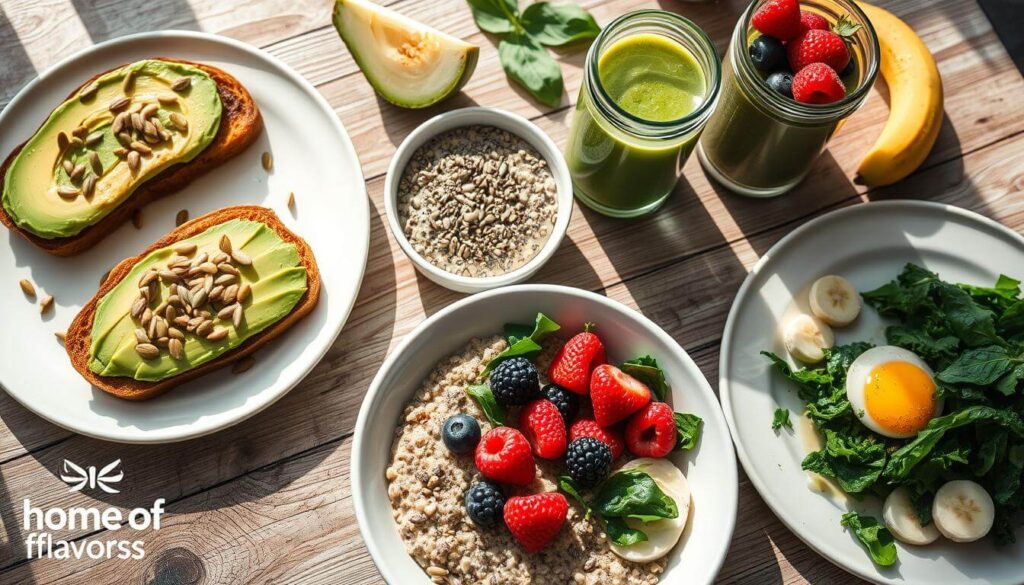
Knowing how to choose and time your magnesium-rich foods is key. This way, you can get the most benefits from top magnesium foods in your diet.
| Foods | Magnesium Content |
|---|---|
| Dark leafy greens | High |
| Nuts and seeds | High |
| Whole grains | Moderate |
Cooking Methods to Preserve Magnesium Content
When you focus on a magnesium-rich diet, how you cook matters a lot. To get the most magnesium, pick the right cooking ways. Steaming and roasting are top choices because they keep magnesium in food without losing too much water.
Here are some cooking tips for magnesium-rich foods:
- Use minimal water to prevent magnesium loss
- Avoid overcooking, as it can lead to a significant loss of magnesium
- Choose cooking methods that help retain the nutrient, such as steaming or roasting
By using these cooking methods, you can keep more magnesium in your food. This helps you stay healthy and balanced. A balanced magnesium in food intake is key for good health.
Special Considerations for Athletes and Active Individuals
If you’re an athlete or always on the move, you need more magnesium. This is because you lose more through sweat and your muscles work harder. Eating foods rich in magnesium is key to keeping your levels up. Good choices include bananas, dates, and dark leafy greens.
Before working out, eating foods with magnesium can give you a energy boost. It also helps your muscles work better. Here are some good pre-workout foods:
- Bananas
- Dates
- Nuts and seeds
After exercising, it’s important to recover well. Foods with magnesium help refill your stores and aid in muscle healing. Good recovery foods are chocolate milk, nuts, and dried fruit. Adding these magnesium-rich foods to your diet can improve your performance and health.
Storage Tips for Magnesium-Rich Foods
Keeping magnesium-rich foods in good condition is key. It helps keep their nutrients intact. When storing foods high in magnesium, a cool, dry spot is best.
Here are some tips for storing magnesium-rich foods:
- Store nuts and seeds in an airtight container to keep them fresh and full of magnesium.
- Keep leafy green vegetables in a sealed bag or container to stop moisture from lowering their magnesium.
- Store whole grains in a cool, dry place to keep their magnesium.
By following these tips, you can boost your magnesium intake. Always check the storage advice for each magnesium-rich food to store them right.
Conclusion: Building Your Magnesium-Rich Diet Plan
Making a magnesium-rich diet is easy and can greatly improve your sleep and energy. Adding foods high in magnesium to your meals and snacks is a simple way to meet your body’s needs. This can boost your overall health.
There are many foods rich in magnesium, like leafy greens, nuts, whole grains, and seafood. Try new recipes and flavors to keep your diet exciting. With a bit of creativity, you can add magnesium-rich foods to all your meals and snacks.
When starting to increase your magnesium, talk to a healthcare professional. This is important if you have health issues or take medications. They can help tailor your diet to fit your specific needs and goals.
FAQ
What are the best sources of magnesium?
The best sources of magnesium include leafy greens, nuts, seeds, whole grains, and legumes. Fatty fish and dairy products are also good options.
How much magnesium do I need per day?
The daily magnesium need varies by age and gender. Adults usually need 310-420 mg per day.
What are the signs of magnesium deficiency?
Signs of magnesium deficiency include fatigue, muscle cramps, and weakness. You might also feel a loss of appetite and have trouble sleeping.
How does magnesium affect sleep and energy levels?
Magnesium helps regulate sleep and energy. It relaxes the body, reducing stress and anxiety. It also aids in energy production by making ATP.
What are some magnesium-rich fruits and vegetables?
Spinach and kale are great for magnesium. Avocados, bananas, and legumes are also good sources.
Are there any factors that affect magnesium absorption?
Yes, compounds like phytates and oxalates can block magnesium absorption. Avoid eating too much of these foods to boost your magnesium.
How can athletes and active individuals ensure they get enough magnesium?
Athletes need more magnesium due to sweat and muscle activity. Eating bananas and dates before workouts and chocolate milk and nuts after can help meet their needs.
How can I incorporate more magnesium-rich foods into my diet?
Add leafy greens, nuts, seeds, whole grains, and legumes to your meals. Snack on dark chocolate, yogurt, and avocado to boost your magnesium intake.

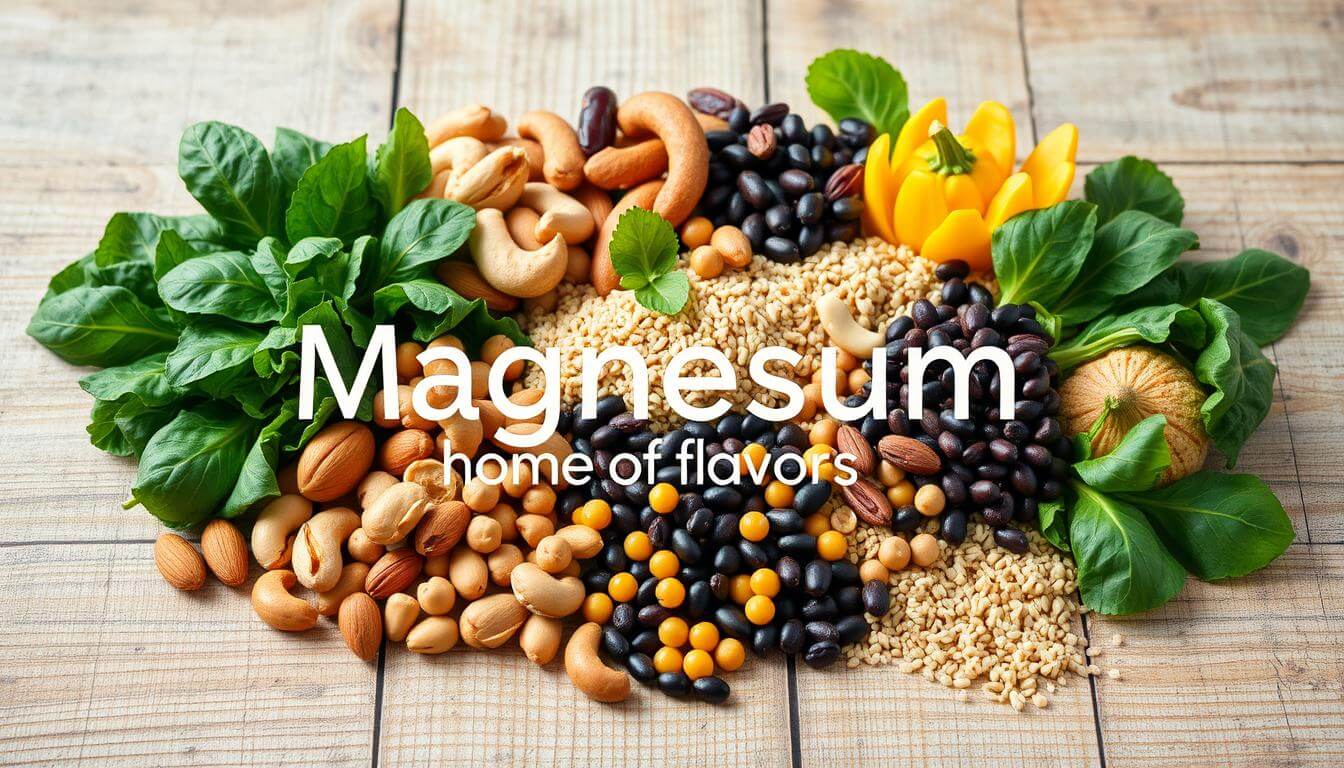
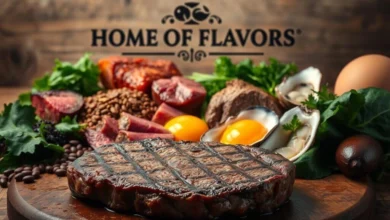
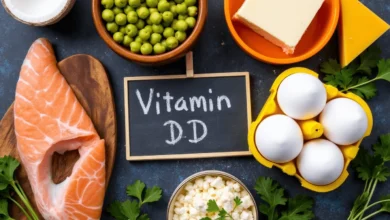
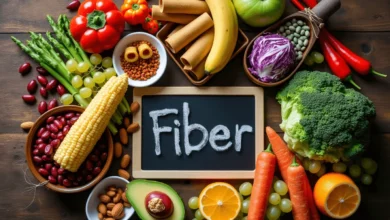
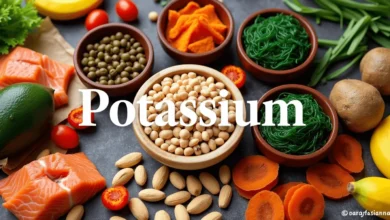
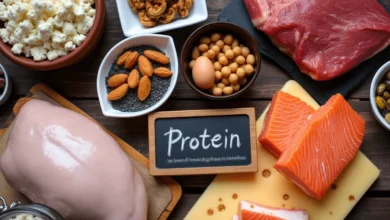
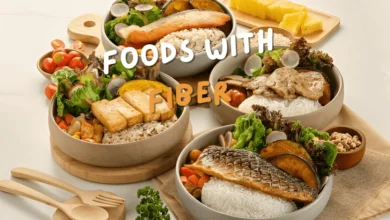
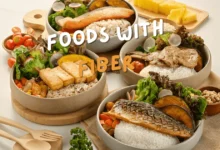

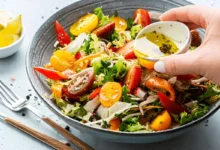
One Comment